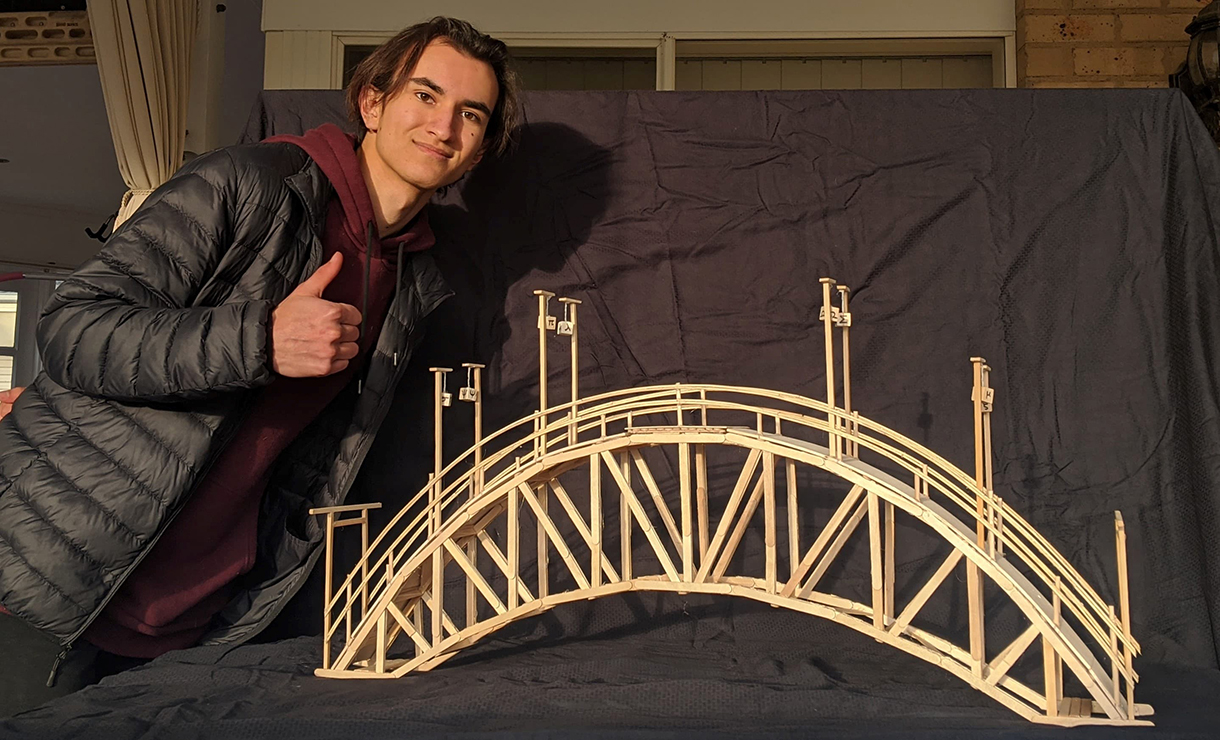First-year engineering students get creative with LEGO Masters-inspired task

In summary
- First-year engineering students were tasked with using materials from home to build a 500mm span bridge, that could carry a minimum 1 kg load
- They researched an existing bridge, observed its working principles then came up with their own design
- Each student prepared a video presentation demonstrating the load test
In response to the need to move teaching and learning online due to the Covid-19 situation, Swinburne Civil and Construction Engineering lecturer Dr Jessey Lee gave her first-year students a Lego Masters-inspired final assessment task.
The brief was to use materials from home to build a 500mm span bridge, that could carry a minimum 1 kg load.
“Mechanics of Structures is a first-year core engineering unit,” Dr Lee says. “When classes moved online, the weekly three-hour face-to-face lectures were replaced with asynchronous recordings including a one-hour live session to recap or ask questions.”

Tutors ran virtual lab sessions where they performed experiments, recording their measurements and data. Students had to extract the data and compare it with their own theoretical calculations to complete assessment tasks.
Traditionally there is also an invigilated final exam that is worth 50 per cent of the student’s assessment.
“As an alternative, for semester 1 2020, the approach taken was to have an authentic hands-on assessment with a DIY bridge project, worth 35 per cent, combined with a final quiz worth 15 per cent,” Dr Lee says.
Students first needed to research an existing bridge of their choice, observe the working principles of the bridge, then come up with their own design using materials of their choice from home. In addition, each student prepared a video presentation demonstrating the load test, and ways to improve their design.
“They had to build their bridge, submit a design report using principles learnt from the unit, then run a load test and reflections of the design on video,” says Dr Lee.
Here are some the results:





Dr Lee says: “I really like the blended approach and I think students love it too. I believe hands-on work is always great for authentic learning and I’m definitely going to keep the DIY project. It adds a bit of the element of fun as well, but we may retain some part of the exam in future.”
-
Media Enquiries

